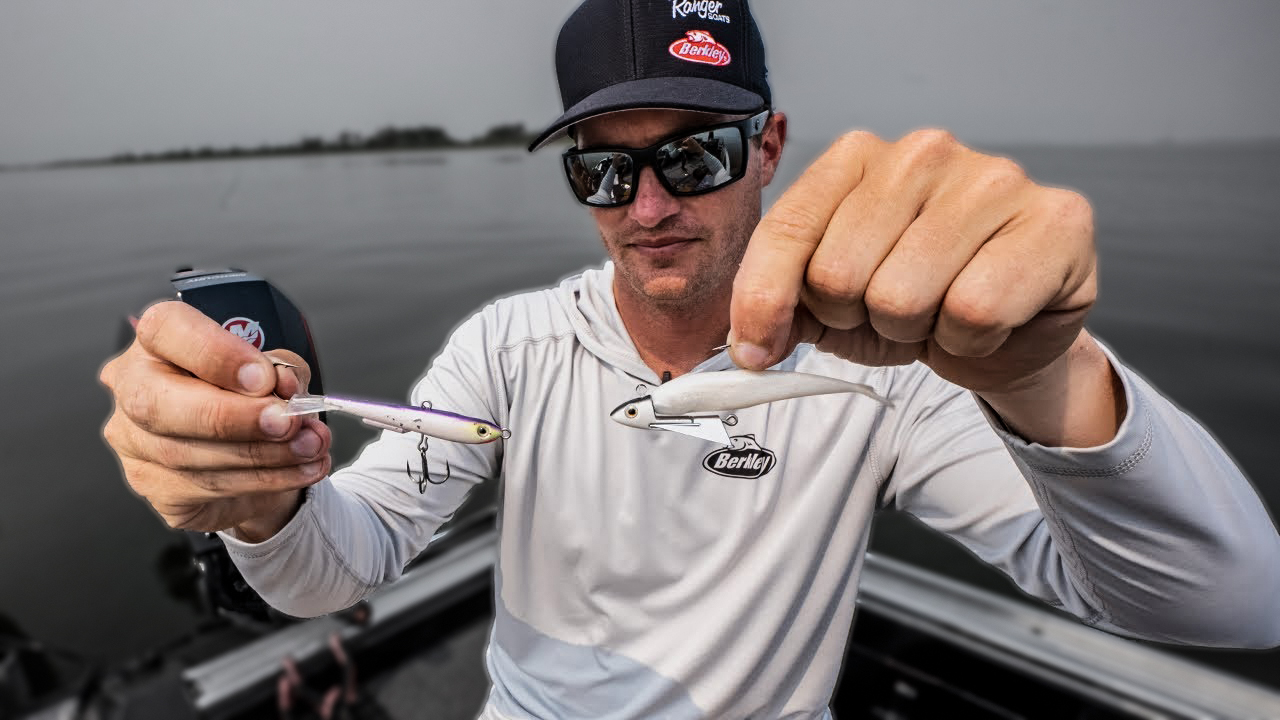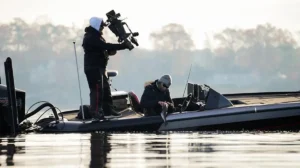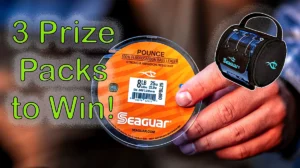Gliding-style jigs have become artificial lure staples for power fishing walleyes. Pro walleye angler Korey Sprengel breaks down two popular styles, 1) glide baits and 2) gliding jigs. He highlights the key differences and how glide jigs add more versatility to this erratic reaction bait lineup.
TACKLE USED
JIGS & TRAILERS
- GLIDE BAIT – Johnson Johnny Darter
- GLIDE JIG – Berkley Fusion19 Snap Jig, 1/2- and 3/8-ounce
- KEY PLASTICS
- SUNGLASSES – Costa Del Mar Reefton Sunglasses
Initially made for ice fishing, glide baits (aka horizontal jigs) expanded into open water vertical jigging, and now casting techniques with great success (get better hookups with them). Traditional glide baits are heavy and erratic, making them effective in deep water, current, or when speed is a trigger. The challenge is, their fall rate isn’t adjustable without drastically changing the size of the bait. Enter the world of snap jigs. You can adjust snap jig fall speed by changing head weights and plastics — this is often desirable earlier in the season (cooler water) or when fishing shallow water.
ROD SETUPS
- ROD – Abu Garcia Veritas Tournament Spinning Rod, 7′ Medium
- REEL – Abu Garcia REVO Rocket Spinning Reel (REVO2RCKT30),
- LINE (braided mainline) – Berkley X9 Braided Line, 10-pound
- LINE (leader) – Berkley Trilene 100% Fluorocarbon, 15-pound
Sprengel demonstrates how to choose plastics for glide jig fishing, with a preference for streamlined, minnow-profiled varieties. Rigging them straight is essential too. He shares a tip to get your threading distance perfect nearly every time. Like a crankbait, be sure to drop it over the side of the boat and test for a straight and true erratic darting action.
Despite having different pull points, glide baits and jigs are fished similarly with a sharp rod rip, followed by a fall on slack line. Like jerkbait fishing, a fall on slack allows the bait to dart and wander randomly and unimpeded. A heavier power rod with a stiffer fast action is preferred, as is a no-stretch braided mainline. Sprengle opts for a large arbor (30-size), fast gear ratio spinning reel to pick up slack quickly, detect bites on the fall, and feel for bottom contact during the retrieve.
And unlike a glide bait, don’t avoid fishing gliding jigs around boulder fields and grass beds. Bottom line, both lure categories have their time and place. Consider putting the live bait down and trying these highly-effective techniques the next time you chase walleyes.












